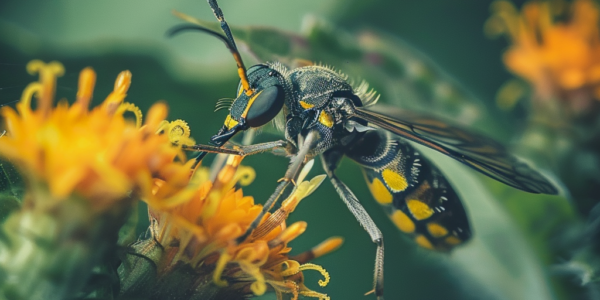Decades-Old Canned Salmon Reveals Insights into Historical Marine Ecology
Canned salmon has unexpectedly become a treasure trove of historical marine ecology, with decades-old specimens of Alaskan marine life preserved in brine and tin. Parasites found in these expired cans of salmon are providing valuable insights into the ecosystem, shedding light on the intricate web of life in the Pacific Northwestern marine environment. Natalie Mastick and Chelsea Wood, parasite ecologists from the University of Washington, seized the opportunity to study the effects of parasites on marine mammals by acquiring dusty old cans of salmon dating back to the 1970s from Seattle’s Seafood Products Association. These cans, originally set aside for quality control, have now become a valuable archive of well-preserved specimens of marine parasites. Despite the initial revulsion at the thought of worms in canned fish, these marine parasites, known as anisakids, pose no threat to humans when killed during the canning process. In fact, their presence is seen as an indicator of a healthy ecosystem, as they are an integral part of the marine food web. Anisakids enter the food chain when they are consumed by krill, which are then preyed upon by larger species. This intricate life cycle provides important clues about the health and dynamics of the marine environment. The accidental discovery of these preserved specimens has opened up new possibilities for researchers to gain retrospective insights into the historical marine ecology of the region. The study of these parasites promises to provide a deeper understanding of the complex relationships within the marine ecosystem, offering a unique window into the past that could inform conservation efforts and ecosystem management in the future.
Hidden Impacts of Ocean Warming and Acidification Revealed
Groundbreaking meta-analysis reveals the hidden impacts of ocean warming and acidification on marine animals’ biological responses. Study highlights the urgent need for proactive measures to mitigate climate change impacts on marine life and preserve biodiversity.
Archaeological Study Suggests Cultural Diversity Increases Biodiversity of Ecosystems
Recent archaeological study suggests that cultural diversity has a positive effect on the biodiversity of ecosystems. The research challenges the idea that humans lived harmoniously with nature as hunter-gatherers and emphasizes the complex relationship between human cultural diversity and ecosystem biodiversity.
The Black Summer of Our Oceans
Learn about the devastating impact of mass coral bleaching events and marine heatwaves on Australia’s east coast waters, reminiscent of the Black Summer bushfires. Urgent action is needed to address the escalating crisis facing our oceans and the impact of climate change on marine ecosystems.
UMass Amherst Researchers Use AI to Eavesdrop on Insects for Environmental Health Assessment
UMass Amherst researchers are leveraging machine learning to eavesdrop on the insect world, aiming to enhance environmental health assessment. By identifying different insect species through their sounds, researchers hope to gain insights into the shifting populations of insects, which can provide valuable information about the overall health of the environment. The study, recently published in the Journal of Applied Ecology, highlights the increasing significance of machine and deep learning in automated bioacoustics modeling. Laura Figueroa, assistant professor of environmental conservation at UMass Amherst and the senior author of the paper, emphasizes the crucial role of insects in ecosystems and the challenges in monitoring their populations. With the rise of environmental stressors and drastic changes in insect populations, traditional sampling methods are proving to be insufficient. The collaboration between ecologists and machine-learning experts is seen as a promising approach to fully unlock the potential of AI in identifying and monitoring insect populations. The potential of AI in environmental health assessment is evident, offering a non-invasive and efficient alternative to traditional entomological methods. As Figueroa points out, the ability to differentiate insect sounds and train AI models to identify species based on their unique sounds opens up new possibilities for understanding and safeguarding insect populations in the face of environmental challenges.
Surprising Discovery About Energy Exchange in Natural Ecosystems
Scientists have discovered a surprising balance of energy exchange in natural ecosystems, with forests and streams engaging in an equal exchange of energy. The study uncovers the role of nutritional quality in maintaining this balance and explores how allochthony patterns differ among various species groups and across diverse climates. This research provides important clues about how these intricate exchanges might shift in response to changing environmental conditions.
Nematodes Discovered in Great Salt Lake, Challenging Long-Held Beliefs
Scientists at the University of Utah have discovered a third form of multicellular life in the Great Salt Lake – nematodes, or worms, thriving in its ultra-saline waters. This groundbreaking finding challenges long-held beliefs about the lake’s biodiversity and expands the understanding of nematode adaptability in extreme environments. The study’s use of advanced molecular techniques underscores the significance of the discovery, opening new avenues for research into the adaptability of organisms in hyper-saline environments.
Restored Coral Reefs Can Grow as Fast as Healthy Ones, New Research Shows
New research reveals that restored coral reefs can grow as fast as healthy ones, providing similar habitats for marine life and protecting adjacent islands from coastal erosion. The study found that coral cover, colony sizes, and carbonate production rates tripled following coral transplantation and were indistinguishable from nearby healthy reefs in all investigated parameters after just four years. This research shows that active management actions can help boost the resilience of specific reefs and bring back important functions critical for marine life and local communities.
Food Web Flexibility Through Time
A theoretical experiment followed the food webs between 50 predatory spider species and 974 prey species in a species-rich ecosystem over 8 months. The study found that the network architecture shifted between consecutive months, with some species leaving, others appearing, and some predators switching prey. The authors identified certain species as ‘network coordinators’ that contribute to the flexibility of the overall network architecture, offering stability to the ecosystem as a whole. This research highlights the importance of considering the dynamism of ecological networks in understanding community stability in the face of environmental changes.
Glacier-Fed Streams Undergoing Profound Change, Scientists Say
Glacier-fed streams are changing due to ongoing glacier shrinkage, leading to a flourishing of microbial life. EPFL and Charles University scientists report that as glaciers shrink, the streams become warmer, clearer, and calmer, allowing microorganisms to contribute more to local carbon and nutrient cycles.










